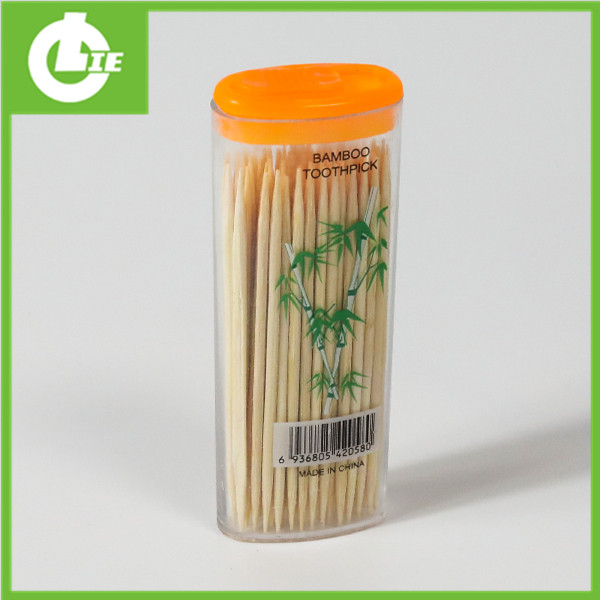鮮やかな色の新鮮な竹は、長期間保存すると徐々に光沢が失われ、場合によっては色が変化します。また、竹にはでんぷん、糖分、タンパク質、脂肪などが多く含まれているため、菌類や昆虫の影響を受けやすく、利用価値や経済的利益が減少します。竹のカビは非常に顕著であり、竹とその製品の外観に影響を与えるだけでなく、他の真菌性害虫の発生条件も生み出します。カビの菌糸体は生殖成長段階で多数の着色胞子を生成し、竹の表面を汚染することがあります。一部の菌糸 (フザリウムなど) は色素を分泌し、竹の表面を汚染することがあります。ひどく汚染された竹の表面は茶色または黒色です。顔料の浸透効果により、汚染は数ミリメートルの深さに達する可能性があります。洗浄、研磨、カンナ削りなどを行ってもカビを除去することはできず、竹材や竹製品の外観品質に重大な影響を与えます。竹も変色菌の感染により青く暗くなり、光沢も弱まってしまいます。
1980年代以来、竹のカビ予防に関する多くの研究が国内外で行われてきました。竹の変色菌のほとんどは、Deuteromycetes、Hyphomycetes、Deuteromycotina 科の属に属します [32]。 Hyphomycelaceae (Hyphomycelaceae) Penicillium (Penicillum Link.)、Aspergillus pergillus (Mich.) Link)、および Trichoderma (Trichoderma Pers.) およびその他の属のカビは、主に竹の緑、青、黄、赤、灰色などの変色汚染を引き起こします。 CladosporiumLink、ArthrinumKunze、AltemarlaNees、VerticilliumNees、およびその他の Dematlaceae 属は、主に茶色と黒の竹汚染を引き起こします。カビの原因となる主な竹の種類は地域によって異なります。たとえば、クラドスポリウム・オキシスポラムやトリコデルマ・ビリデなどは南部ではよく見られますが、北部ではまれです。
The degree of mildew of bamboo is from mild to severe, from sporadic distribution→even distribution→mycelium covering→growing fruit body, until the bamboo loses its processing and utilization performance. In the dark and humid environment in the wild, evenly distributed and hyphae-covered mildews that discolor the bamboo are often produced. Substantia nigra, conidia disc, ascus shell and other types are mostly produced in the sun and rain in the open air environment. Environmental humidity is the key to bamboo mildew. When the humidity is lower than 75%, it is basically not mildewed, and when the humidity is higher than 95%, it is very easy to mildew; the optimum temperature for bamboo mildew is 20~30℃, and the optimum pH is 4~ 6. The mildew resistance of bamboo is also related to bamboo species, bamboo age, rank and harvesting season. Mildew mainly affects the clean and beautiful appearance of bamboo products, but also reduces the surface strength of bamboo materials and shortens the service life of bamboo materials. The anti-mildew treatment of bamboo is an important part of the industrialized utilization of bamboo. Bamboo should be dried in time and stored in a ventilated and clean environment. It can be boiled to kill potential molds and silverfish, or surface treatments such as bleaching and painting can be carried out.
国内外の市販の防カビ剤の有効成分は 2 種類または 3 種類の防カビ剤の混合物であることが多く、通常、高効率、長時間作用、低毒性、低コスト、多効果、広範囲の竹製防カビ剤が使用されます。選択されました。しかし、竹は外壁が緻密で薬液が非常に浸透しにくく、木材とは防カビ処理方法が異なります。竹防カビ剤の処理にはブラッシング法、浸漬法、加圧注入法などがあります。
1. ブラッシング法は、竹の表面に防カビ剤を均一に塗布し、表面のカビを抑制または殺すことです。この方法は操作が簡単ですが、短期間のカビ予防にのみ適しています。
2. 浸漬法は、竹材を防カビ薬液に浸漬し、薬液を組織に浸透させます。処理方法の違いにより、室温浸漬、加熱浸漬、温冷浴交互浸漬に分けられます。一般に、常温浸漬法よりも温冷交互浴法の方が防カビ効果が高くなります。
3. The pressurized injection method is to cut off the top of the newly harvested bamboo stalk, put it in a pressure-resistant leather tube, and tie it tightly with a metal ring or iron wire. The liquid flows along the skin tube to the bamboo tip section, and then pressurizes on the liquid surface of the medicine storage tank, so that the medicinal liquid enters the bamboo material along the bamboo tip section tube.
このほか、高温滅菌、水浸漬、燻煙、漂白などの物理的滅菌方法もあるが、全体的な経済効果は高くない。


